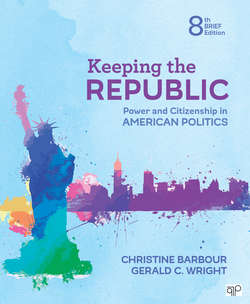Читать книгу Keeping the Republic - Christine Barbour - Страница 107
На сайте Литреса книга снята с продажи.
Two Views of Federalism
ОглавлениеPolitical scientists have also changed the way they think about federalism. For many years the prevailing theory was known as dual federalism, basically arguing that the relationship between the two levels of government was like a layer cake. That is, the national and state governments were to be understood as two self-contained layers, each essentially separate from the other and carrying out its functions independently. In its own area of power, each level was supreme. Dual federalism reflects the formal distribution of powers in the Constitution, and perhaps it was an accurate portrayal of the judicial interpretation of the federal system for our first hundred years or so.
dual federalism the federal system under which the national and state governments are responsible for separate policy areas
But this theory was criticized for not describing realistically the way the federal relationship was evolving in the twentieth century. It certainly did not take into account the changes brought about by the New Deal. The layer cake image was replaced by a new bakery metaphor. According to the new theory of cooperative federalism, rather than being two distinct layers, the national and state levels were swirled together like the chocolate and vanilla batter in a marble cake.8 National and state powers were interdependent, and each level required the cooperation of the other to get things done. In fact, federalism came to be seen by political scientists as a partnership, but one in which the dominant partner was, more often than not, the national government.
cooperative federalism the federal system under which the national and state governments share responsibilities for most domestic policy areas
Who should have primary responsibility in case of emergencies or natural disasters: the local, state, or national government?
